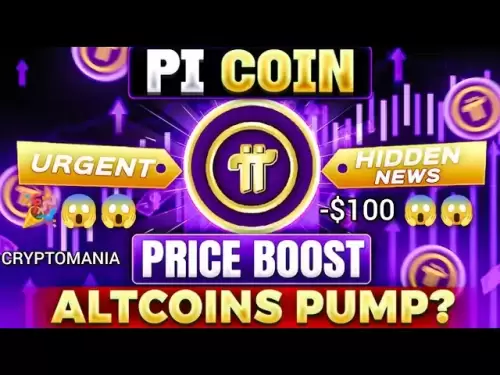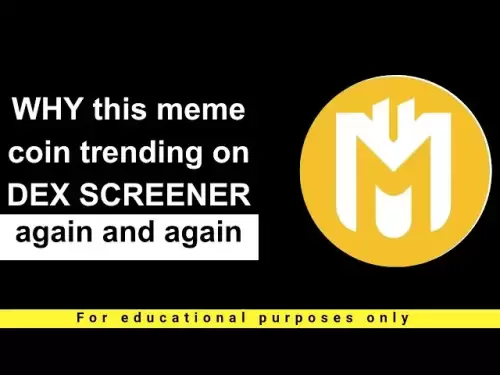-
 Bitcoin
Bitcoin $109,507.9823
0.43% -
 Ethereum
Ethereum $2,716.0274
3.79% -
 Tether USDt
Tether USDt $1.0003
-0.01% -
 XRP
XRP $2.3859
3.05% -
 BNB
BNB $665.2705
0.56% -
 Solana
Solana $154.6874
1.56% -
 USDC
USDC $1.0002
0.02% -
 TRON
TRON $0.2896
1.05% -
 Dogecoin
Dogecoin $0.1738
1.67% -
 Cardano
Cardano $0.6117
3.72% -
 Hyperliquid
Hyperliquid $40.3052
3.82% -
 Sui
Sui $2.9817
2.08% -
 Bitcoin Cash
Bitcoin Cash $505.0944
0.71% -
 Chainlink
Chainlink $14.0820
1.96% -
 Stellar
Stellar $0.2902
12.90% -
 UNUS SED LEO
UNUS SED LEO $9.0423
-0.34% -
 Avalanche
Avalanche $18.7084
1.54% -
 Hedera
Hedera $0.1714
6.33% -
 Shiba Inu
Shiba Inu $0.0...01218
2.48% -
 Toncoin
Toncoin $2.8261
1.24% -
 Litecoin
Litecoin $88.8228
1.59% -
 Monero
Monero $319.1344
2.71% -
 Polkadot
Polkadot $3.5479
2.69% -
 Dai
Dai $1.0001
0.00% -
 Ethena USDe
Ethena USDe $1.0010
0.06% -
 Uniswap
Uniswap $8.2690
6.49% -
 Bitget Token
Bitget Token $4.3622
1.19% -
 Aave
Aave $298.5989
2.11% -
 Pepe
Pepe $0.0...01042
1.97% -
 Pi
Pi $0.4663
1.15%
How to manage NFTs with a Trezor wallet
Trezor wallets securely manage NFTs on Ethereum and other blockchains by connecting to platforms like OpenSea via MetaMask, though they don’t display NFTs directly in the wallet interface.
Jul 09, 2025 at 10:01 pm
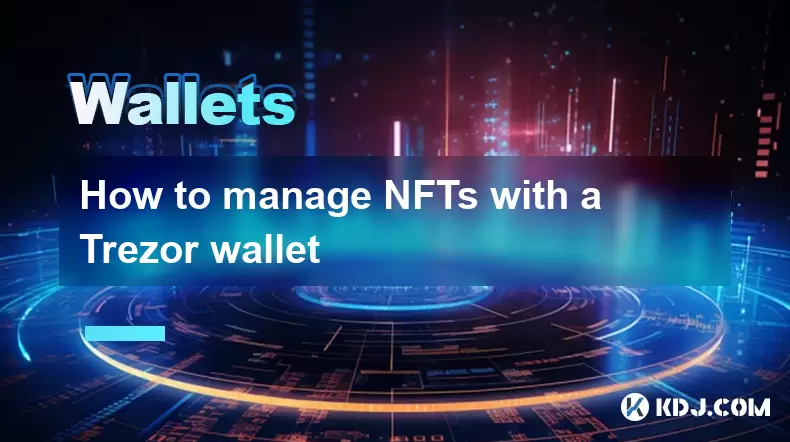
Understanding NFTs and Trezor Wallet Compatibility
Non-Fungible Tokens (NFTs) are unique digital assets that represent ownership of a specific item or content on the blockchain. Managing these assets securely is crucial, especially given the growing value and popularity of NFTs. Trezor wallets, known for their robust security features, support interaction with various blockchains such as Ethereum, which is the most common network for NFTs.
While Trezor does not offer a built-in NFT viewer in its wallet interface, it allows users to interact with ERC-721 and ERC-1155 tokens through third-party platforms like OpenSea or Rarity.tools. This means you can manage your NFTs using your Trezor device by connecting it to these external marketplaces via browser extensions like MetaMask.
Setting Up Your Trezor Wallet for NFT Interaction
Before managing NFTs, ensure your Trezor wallet is properly configured and connected to the Ethereum network. Here’s how:
- Make sure you have installed the latest firmware on your Trezor device.
- Use the Trezor Suite app to access your accounts and check your ETH balance.
- Add the Ethereum account to your Trezor if it's not already there.
- Ensure you have enough ETH for gas fees, as interacting with NFTs requires transaction costs.
Once this setup is complete, you're ready to connect your Trezor to an NFT marketplace.
Connecting Trezor to NFT Marketplaces via MetaMask
To interact with NFTs stored on blockchains like Ethereum, you’ll need to use a compatible wallet interface. Since Trezor doesn’t directly integrate with NFT marketplaces, you'll use MetaMask as an intermediary. Here's how:
- Install the MetaMask browser extension on Chrome or Firefox.
- When setting up MetaMask, choose the option to connect a hardware wallet.
- Follow the prompts and select Trezor from the list of supported devices.
- Unlock your Trezor and allow the connection.
- Once connected, switch the network in MetaMask to Ethereum Mainnet.
- You should now see your Ethereum address associated with your Trezor.
With this integration, you can now navigate to NFT platforms like OpenSea or LooksRare and sign transactions using your Trezor device.
Viewing and Managing NFTs with Trezor
After connecting your Trezor to MetaMask and accessing an NFT marketplace, you can begin viewing and managing your NFTs. However, keep in mind that Trezor does not display NFTs directly in its interface, so all interactions occur through the connected platform.
Here’s what you can do:
- Browse your NFT collection on platforms like OpenSea by connecting your MetaMask wallet.
- To send or receive NFTs, initiate the transfer on the NFT platform.
- Confirm each transaction using your Trezor device — always double-check the recipient address and the token being sent.
- For added security, review the transaction details on your Trezor screen before approving.
It's essential to never share your recovery phrase and always verify the legitimacy of any website before connecting your wallet.
Security Best Practices When Managing NFTs with Trezor
Managing NFTs involves risks, particularly when using third-party platforms. Here are some security best practices to follow:
- Always ensure you’re visiting legitimate websites — bookmark trusted NFT platforms.
- Never approve transactions without verifying them on your Trezor screen.
- Keep your Trezor firmware and software updated to protect against vulnerabilities.
- Store your recovery phrase offline and away from prying eyes.
- Avoid using public Wi-Fi when signing transactions or accessing your wallet.
By adhering to these guidelines, you significantly reduce the risk of losing your NFTs to phishing or malicious sites.
Frequently Asked Questions
Can I store NFTs directly in my Trezor wallet?
No, Trezor does not provide a native interface to view or store NFTs within the wallet itself. However, you can manage NFTs stored on supported blockchains using your Trezor private keys through third-party platforms like OpenSea or MetaMask.
Is it safe to connect my Trezor to MetaMask for NFT transactions?
Yes, it’s safe as long as you follow best practices: only connect to verified platforms, never approve unknown transactions, and always confirm actions on your Trezor device before proceeding.
Why don't I see my NFTs in the Trezor Suite app?
Trezor Suite currently supports fungible tokens but does not display NFTs. To view and manage NFTs, you must connect your Trezor to an NFT marketplace via MetaMask or similar wallet integrations.
What blockchains does Trezor support for NFT management?
Trezor supports several blockchains where NFTs are commonly issued, including Ethereum (ERC-721 and ERC-1155), Binance Smart Chain, and others. Always verify compatibility with the NFT marketplace you're using.
Disclaimer:info@kdj.com
The information provided is not trading advice. kdj.com does not assume any responsibility for any investments made based on the information provided in this article. Cryptocurrencies are highly volatile and it is highly recommended that you invest with caution after thorough research!
If you believe that the content used on this website infringes your copyright, please contact us immediately (info@kdj.com) and we will delete it promptly.
- BlockDAG Leads the Crypto Pack: A 2025 Outlook on BlockDAG, Cardano, Litecoin, and Polkadot
- 2025-07-10 10:50:12
- ONDO Price Watch: Traders Eye Key Resistance for Potential $3 Target
- 2025-07-10 10:50:12
- Bitcoin vs. the Brazilian Real: Navigating Volatility in a Tariff War
- 2025-07-10 11:10:12
- VC Firms, Bitcoin, and Funding: A New York Minute on the Future of Crypto
- 2025-07-10 11:10:12
- Cronos (CRO) Jumps 16% on ETF Buzz: A NYC Take
- 2025-07-10 11:15:12
- Binance, Treasury, and IPOs: Navigating the Crypto Landscape in 2025
- 2025-07-10 11:30:12
Related knowledge

How to find a specific receiving address on my Trezor
Jul 09,2025 at 10:36pm
Understanding the Purpose of a Receiving AddressA receiving address is a unique identifier used in blockchain networks to receive cryptocurrency. Each...

How to connect Trezor to Rabby wallet
Jul 09,2025 at 05:49am
What Is Trezor and Rabby Wallet?Trezor is a hardware wallet developed by SatoshiLabs that allows users to securely store their cryptocurrency assets o...
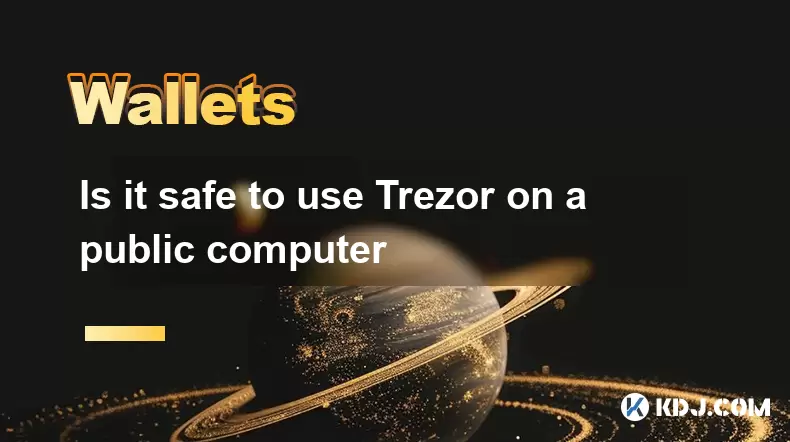
Is it safe to use Trezor on a public computer
Jul 09,2025 at 08:56pm
Understanding the Risks of Using Trezor on a Public ComputerUsing a Trezor hardware wallet is generally considered one of the most secure methods for ...

What happens if I forget my Trezor passphrase
Jul 09,2025 at 03:15am
Understanding the Role of a Trezor PassphraseIf you use a Trezor hardware wallet, you may have set up a passphrase as an extra layer of security beyon...
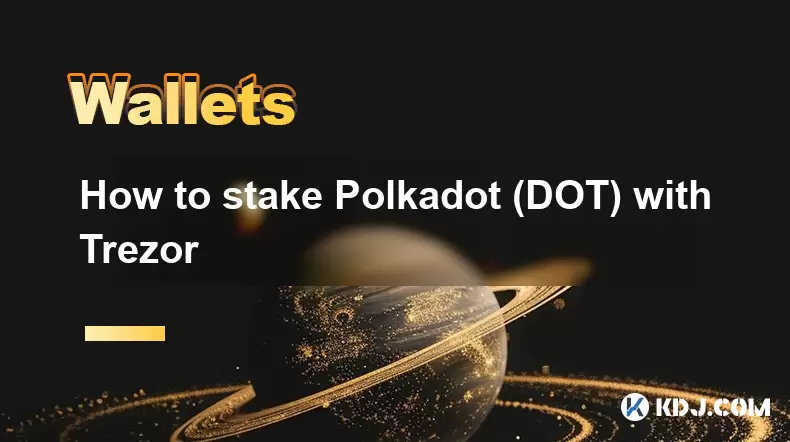
How to stake Polkadot (DOT) with Trezor
Jul 09,2025 at 09:42pm
Understanding Polkadot (DOT) StakingStaking Polkadot (DOT) allows users to participate in network validation and earn rewards. Unlike traditional proo...
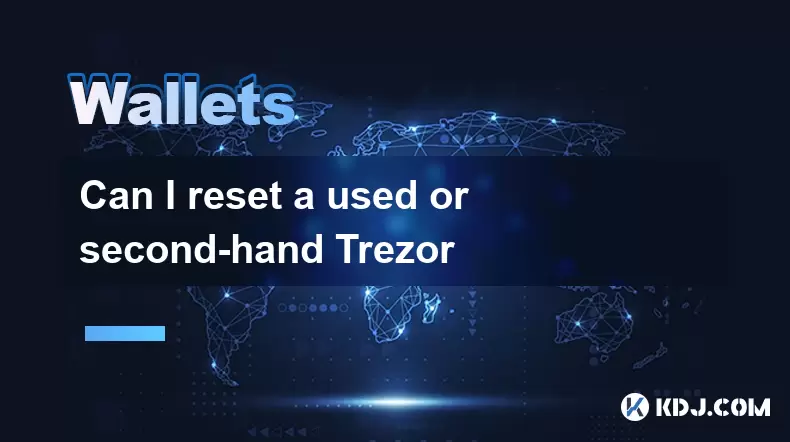
Can I reset a used or second-hand Trezor
Jul 09,2025 at 11:49am
Understanding the Reset Process for a Used or Second-Hand TrezorIf you have acquired a used or second-hand Trezor wallet, one of the first things you ...

How to find a specific receiving address on my Trezor
Jul 09,2025 at 10:36pm
Understanding the Purpose of a Receiving AddressA receiving address is a unique identifier used in blockchain networks to receive cryptocurrency. Each...

How to connect Trezor to Rabby wallet
Jul 09,2025 at 05:49am
What Is Trezor and Rabby Wallet?Trezor is a hardware wallet developed by SatoshiLabs that allows users to securely store their cryptocurrency assets o...

Is it safe to use Trezor on a public computer
Jul 09,2025 at 08:56pm
Understanding the Risks of Using Trezor on a Public ComputerUsing a Trezor hardware wallet is generally considered one of the most secure methods for ...

What happens if I forget my Trezor passphrase
Jul 09,2025 at 03:15am
Understanding the Role of a Trezor PassphraseIf you use a Trezor hardware wallet, you may have set up a passphrase as an extra layer of security beyon...

How to stake Polkadot (DOT) with Trezor
Jul 09,2025 at 09:42pm
Understanding Polkadot (DOT) StakingStaking Polkadot (DOT) allows users to participate in network validation and earn rewards. Unlike traditional proo...

Can I reset a used or second-hand Trezor
Jul 09,2025 at 11:49am
Understanding the Reset Process for a Used or Second-Hand TrezorIf you have acquired a used or second-hand Trezor wallet, one of the first things you ...
See all articles
























